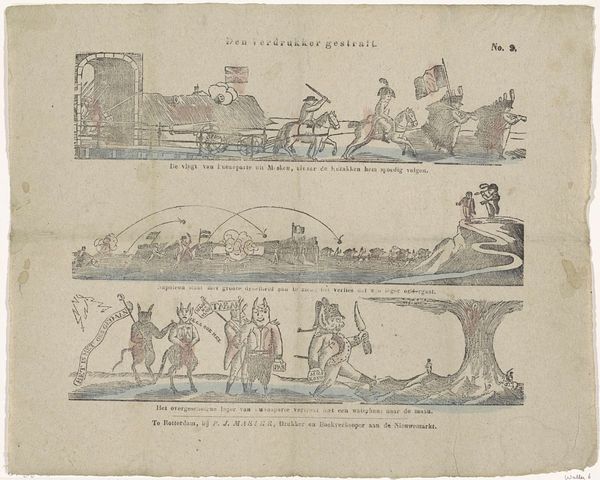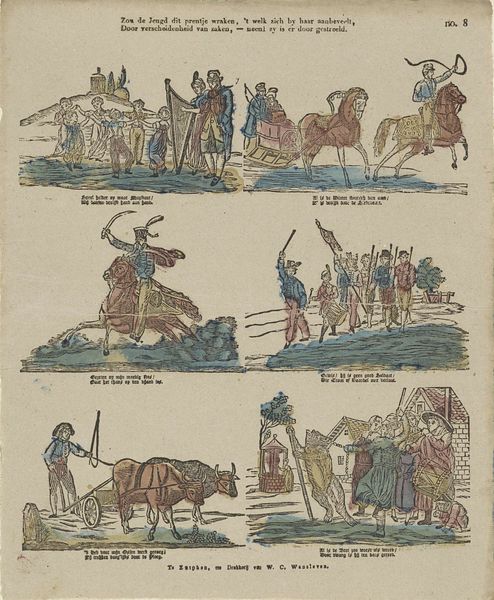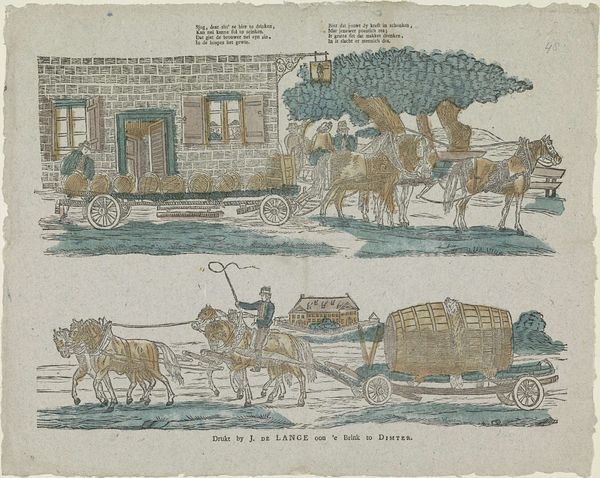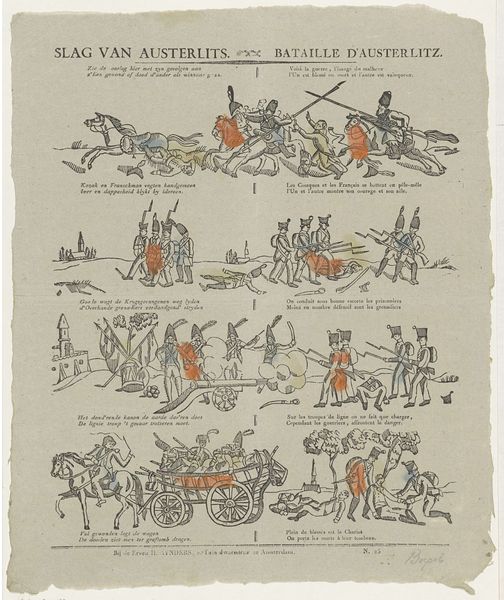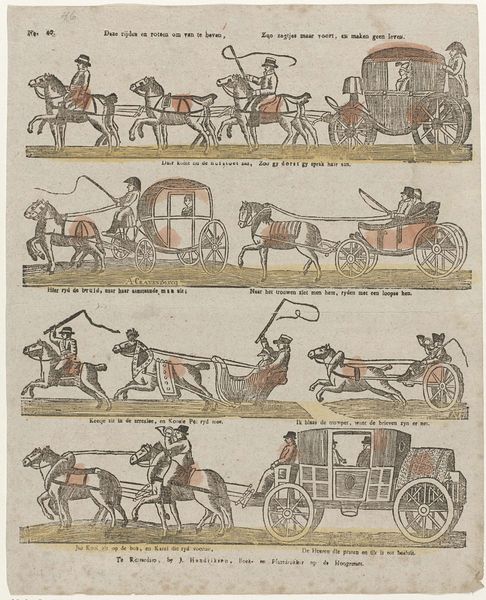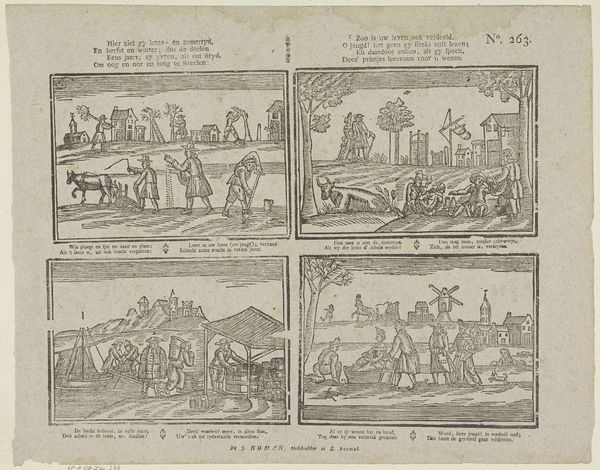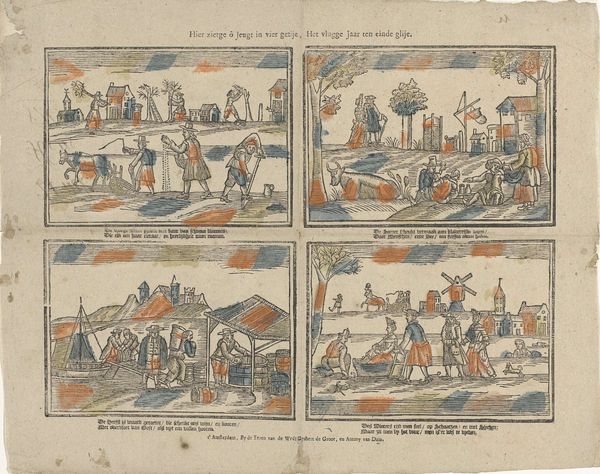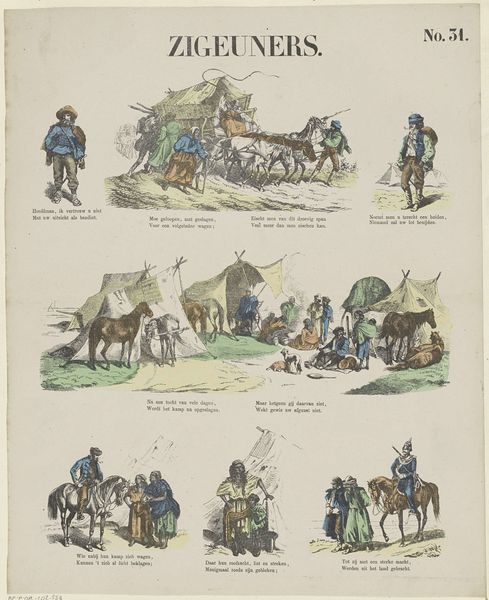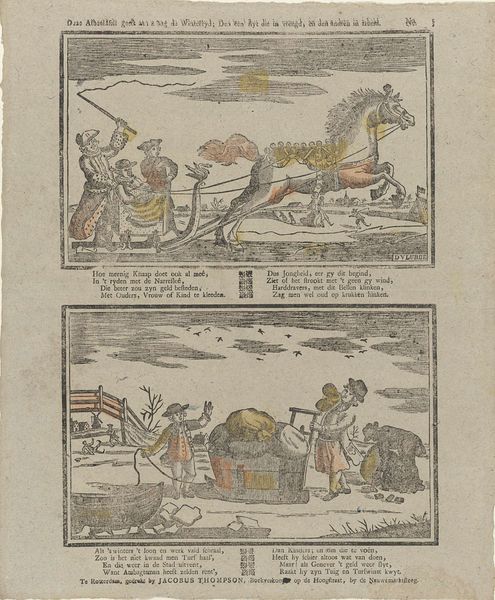
drawing, print, paper, pen
#
drawing
# print
#
pen sketch
#
paper
#
pen
#
cityscape
#
genre-painting
#
history-painting
Dimensions: height 335 mm, width 406 mm
Copyright: Rijks Museum: Open Domain
Editor: So, here we have "Militaire wagens," military wagons, a drawing or print by Willem Carl Wansleven, sometime between 1806 and 1858. It feels… archaic? A little stiff. What’s your take on it? Curator: This print, though seemingly simple, offers a potent snapshot of early 19th-century societal values and military structure. Given the period, consider the rise of nationalism and the glorification of military prowess. Who is being celebrated, and whose labour is rendered invisible here? Editor: I see horses and soldiers. It seems like a celebration of military might. Curator: Exactly. And who benefits from this projection of power? The print reinforces a hierarchy, doesn’t it? Think about the economic engines that fueled these displays of power, and the role of those excluded from it – perhaps women, labourers, or colonized people? This wasn’t simply about horses and uniforms; it was about maintaining social order. Editor: So you are saying it presents military power, but perhaps it disguises an imbalance of power, and social exclusion? Curator: Precisely. And look closer. Notice the print quality and style. These prints were widely distributed; cheap. What sort of political ideology are such relatively mass-produced images supporting? Who had access to these images and what narratives do they consume, reinforcing power structures? Consider it a form of propaganda, perhaps, subtly shaping public perception of military strength. Editor: Wow, I hadn’t thought about it that way. So, the act of distributing these images serves a political purpose by creating and controlling a narrative of national strength. Curator: Absolutely. Understanding the mechanics of image distribution is just as important as the content within the frame. The social context in which art is viewed shapes its significance, shifting focus from the surface level toward issues of class, power, and hidden social agendas. Editor: I learned to not just look, but to look *through* the image to its historical moment, which I should then interpret with a critical lens.
Comments
No comments
Be the first to comment and join the conversation on the ultimate creative platform.
